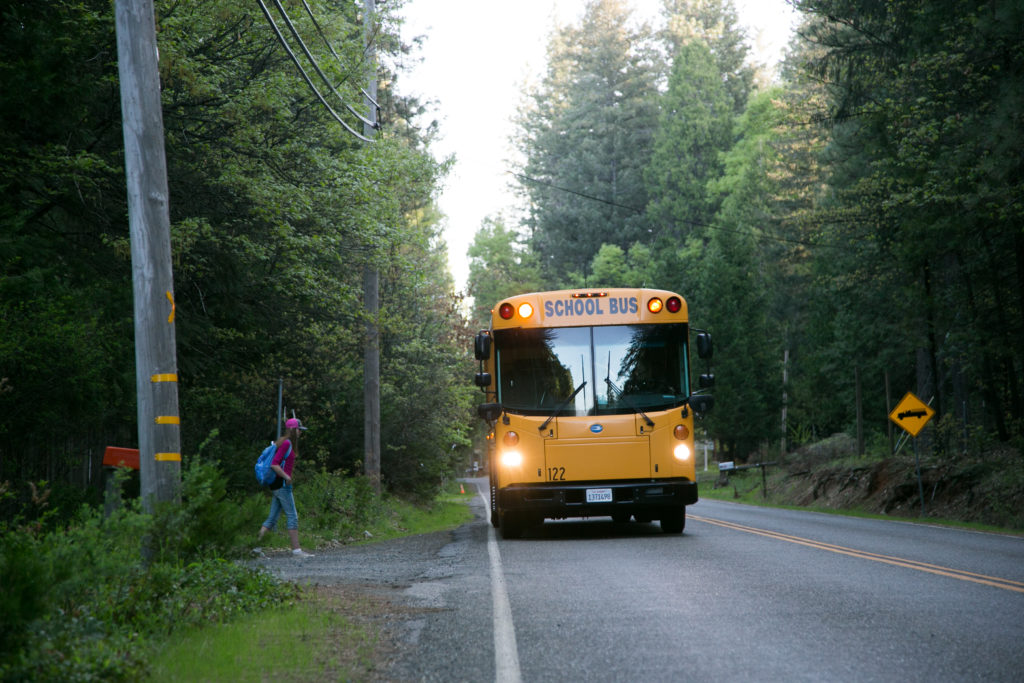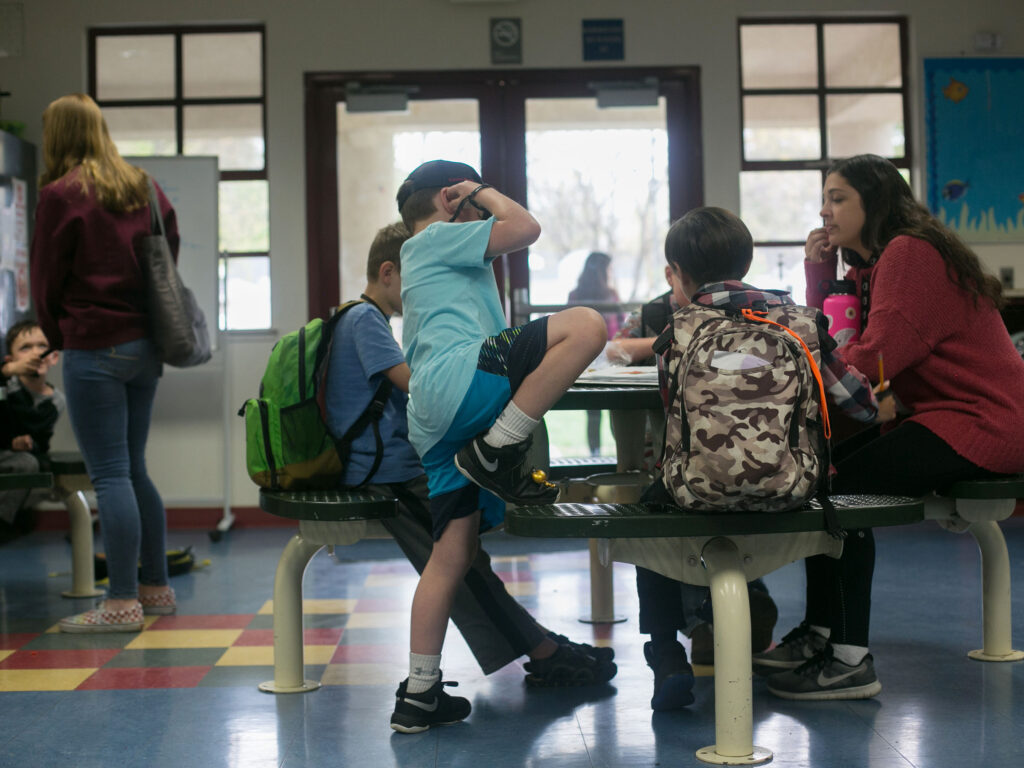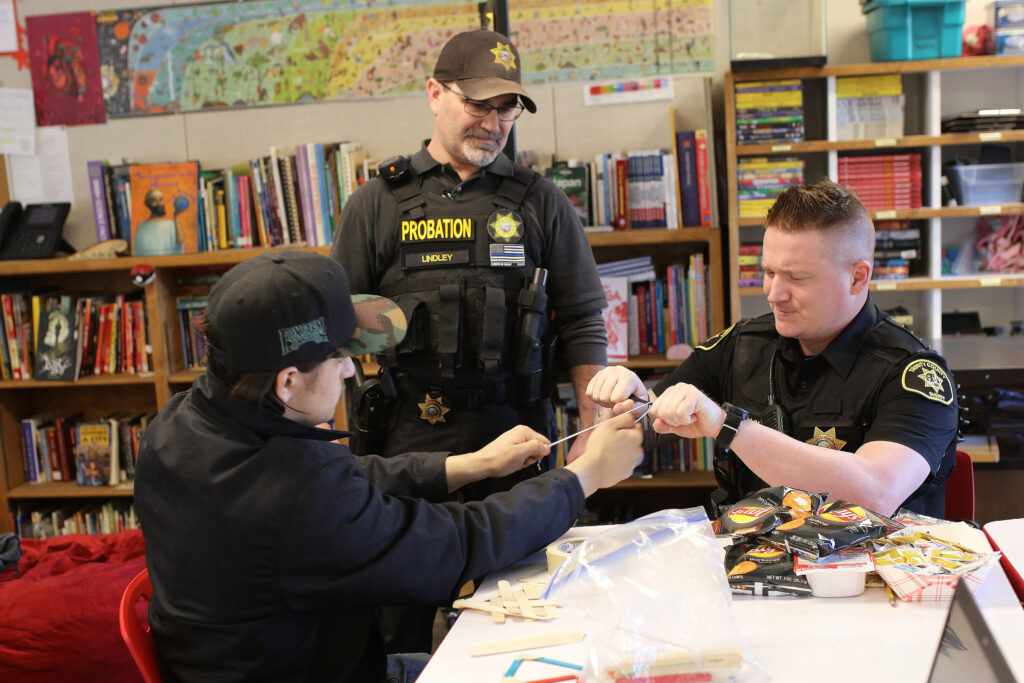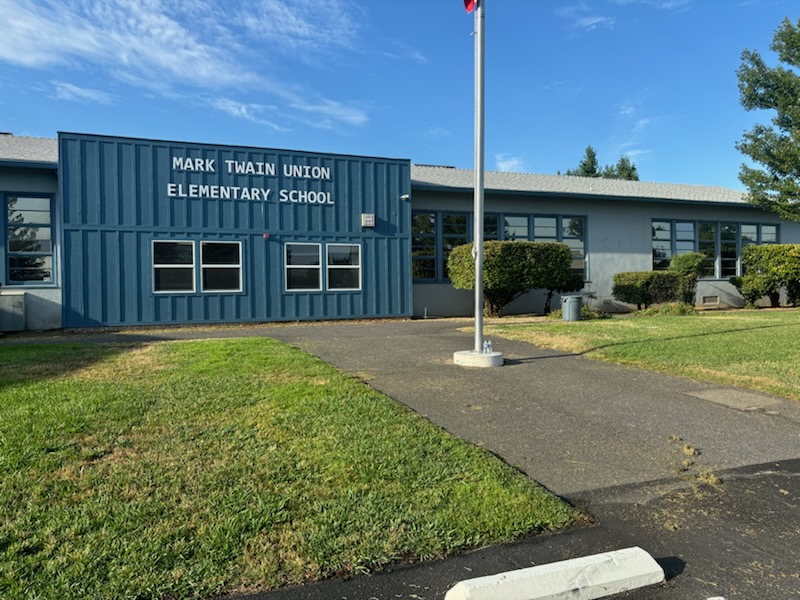
Nine rural counties, located more than 60 miles from university teacher preparation programs, struggle to recruit enough teachers to fill classrooms.
Credit: Julie Leopo for EdSource
Nine rural California counties, most struggling with student achievement and teacher recruitment, are in teacher education deserts, according to a report released Tuesday from the UCLA Center for the Transformation of Schools.
Alpine, Del Norte, Imperial, Inyo, Lassen, Modoc, Mono, Sierra and Siskiyou counties do not have teacher preparation programs within 60 miles of their county offices of education, according to the report, “California’s Teacher Education Deserts: An Overlooked and Growing Equity Challenge.”
“We know that research suggests that teachers are more likely to complete their student teaching and also secure employment close to where they receive their teacher training,” said Kai Mathews, project director for the UCLA Center for the Transformation of Schools.
As a result, six of the nine counties have a higher percentage of underprepared teachers than the state average of 4% to 5%, according to the study. Of the nine counties, Modoc and Lassen have the highest percentage of underprepared teachers at 14% and 17% respectively.
Underprepared teachers work on intern credentials or emergency-style permits that don’t require them to complete teacher training, or on waivers that allow them to teach a subject outside their credential.
Because the state requires that districts only hire underprepared teachers if fully qualified teachers are not available, high rates of underprepared teachers are an indicator that districts in that county are struggling to recruit and hire qualified teachers, said UCLA researchers.
Rural teachers scarce
There could be many reasons teachers are hard to find in rural areas, including fewer nearby institutions of higher education, which leads to a lower than average percentage of residents with bachelor’s degrees and therefore a smaller pool of potential teacher candidates, according to the study.
Counties that border other states and countries also have significantly higher teacher vacancy rates compared with nonborder districts, said Hui Huang, a researcher on the project. All nine of the California counties classified as teacher education deserts are bordered by either Oregon, Nevada, Arizona or Mexico.
“Rural school districts face significant challenges in recruiting and retaining teachers,” said Yuri Calderon, executive director of the Small School Districts’ Association. “In addition to the proximity to teacher educational programs, rural communities face challenges related to competition from higher urban compensation schedules, housing shortages and a lack of support resources commonly found in urban areas.”
Rural counties also lose talented young residents who go to urban and suburban areas for more opportunity, Huang said. In small districts, the loss of even one teacher can impact course availability for students, according to Learning Policy Institute research.
Teacher shortage affects students
The geographic location of a school district plays a significant role in teacher recruitment and retention, and ultimately in the educational outcomes of the district’s students, according to the report.
Students in each of these counties, except Mono, fell below the state average on the English language arts portion of the California Assessment of Student Performance and Progress, also known as CAASPP, in the 2022-23 school year. All nine counties fell below the state average of students who meet standards on the math portion of the test.
Low-performing schools may struggle to attract teachers due to negative public perceptions, Huang said. Research also indicates that highly qualified educators are substantially more likely to leave low-performing schools.
Time for creative solutions
School districts in Mono County have had to get creative to fill teacher positions, despite their prime location near Yosemite National Park and Mammoth Lakes, said Stacey Adler, Mono County superintendent of schools. One district with a dual-immersion program hired teachers from South America to fill open teaching positions, she said.
The high cost of housing and a growing disinterest in the profession among young people are the biggest hurdles to hiring new teachers in Mono County, Adler said.
“We have got to start them early because, quite frankly, there aren’t a lot of kids that say they want to be teachers these days,” she said.
Adler taught child development at Mammoth High School for two years in an attempt to get students interested in teaching, she said. Now the school plans to use a portion of a recent grant to develop a K-12 education pathway at the school.
“Our rural students and our rural teacher workforce, as small as it is, is suffering,” said Annamarie Francois, associate dean of public engagement at UCLA and a member of the California Commission on Teacher Credentialing. “We have a responsibility and an obligation to our community to bring our creative solutions and innovations to bear on those parts of our state.”
One answer may be creating teacher credentialing programs at community colleges in these counties, according to the study. Although all nine teaching education deserts are not located near a university teacher preparation program, five are within 60 miles of a community college.
Early childhood education programs already in place at community colleges could be expanded to K-12 licensing programs, according to the report. The state could also work with county offices of education to develop residency programs so that teacher candidates could earn a credential without leaving the area to take classes or to student teach.
Multiple states, like Florida, Texas and Washington, already offer similar credentialing pathways.
“Expanding local college programs to include K-12 certification, particularly at community colleges, can be a positive solution to address the challenges faced by rural school districts,” Small School Districts’ Association director Calderon said. “By growing teachers from within these communities, rural districts can improve recruitment and retention efforts.”
Although the study recommended that community college credentialing programs focus on residents who already hold bachelor’s degrees, Steve Bautista of the Center for Teacher Education at Santa Ana College suggested that the 39 bachelor’s degrees already being offered in community colleges be expanded to include degrees that could lead to teacher preparation programs.
“Five of the nine TEP deserts will fall away if we were able to utilize, in some capacity, community colleges to license teachers,” UCLA’s Mathews said.
UCLA researchers also recommend that the state take a comprehensive approach to recruiting and retaining teachers in these counties, including financial support, mentorship programs and professional development targeted to rural teachers. County offices of education should also collaborate to develop a regional marketing campaign to recruit teachers, according to the report.
State policy would have to change to put many of these programs in place, Francois said. Leaders from the state’s community colleges, universities and the California Commission on Teacher Credentialing could work together to produce a feasibility study on how to create a seamless bachelor’s degree and credential program at rural community colleges, she said.
“It’s going to take collaboration among folks that maybe haven’t collaborated together in bold thinking, and some courage to think about how we might do this differently in unique spaces,” she said.










